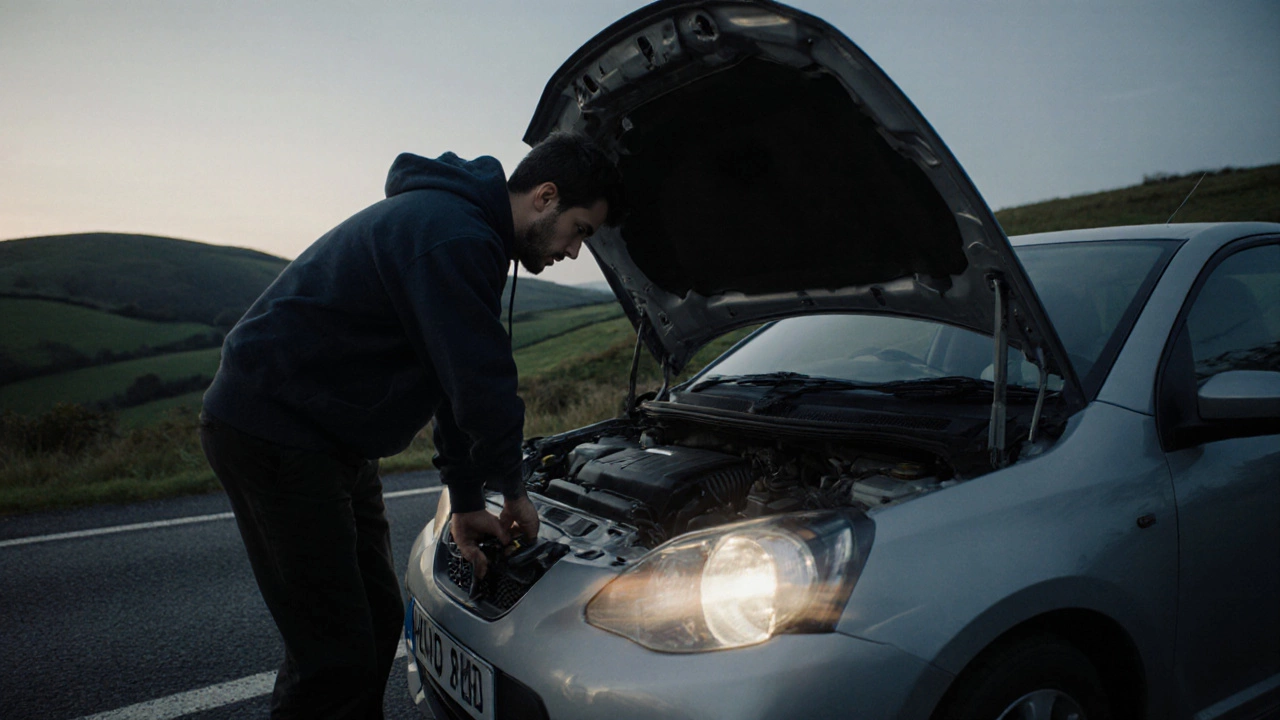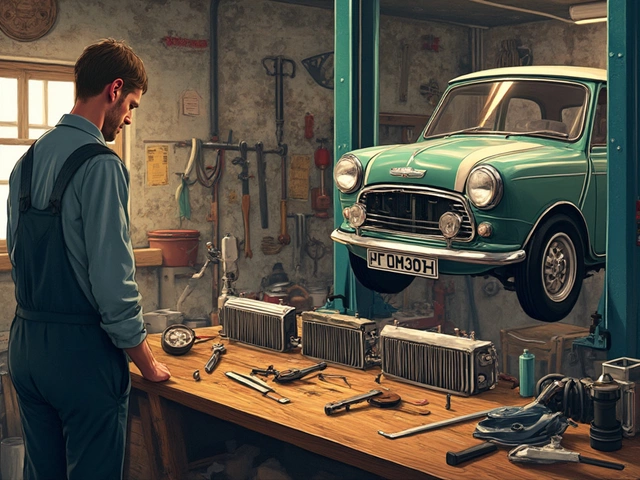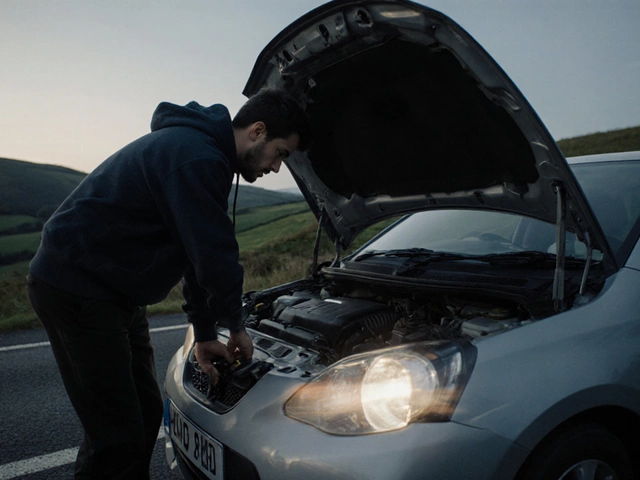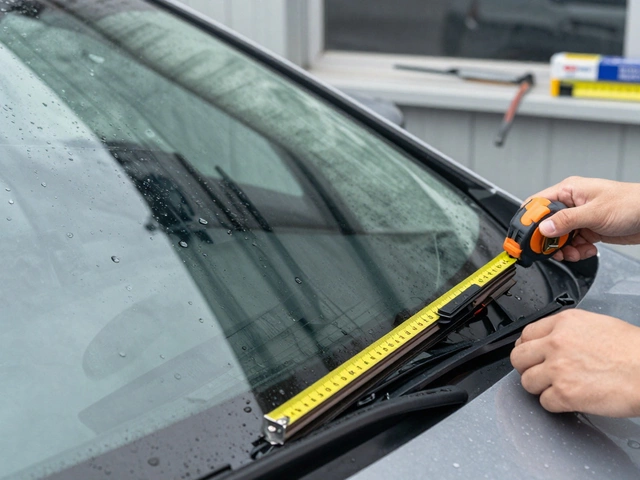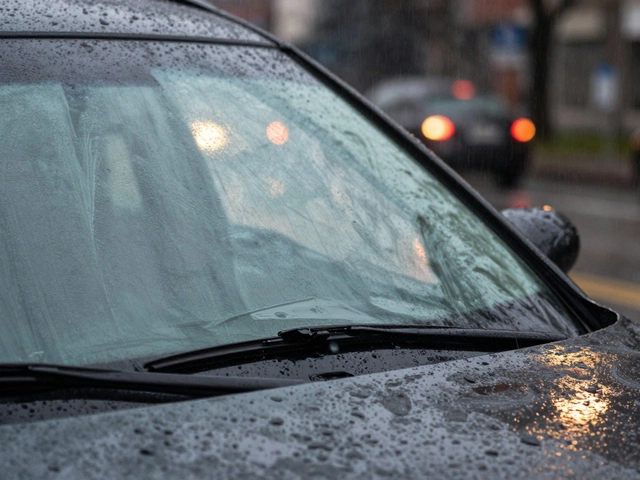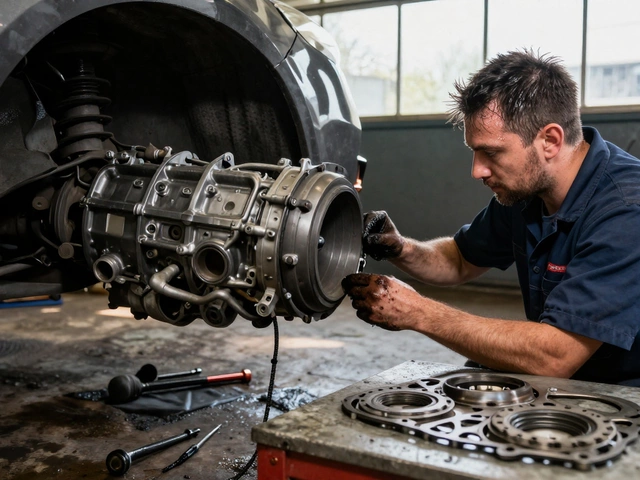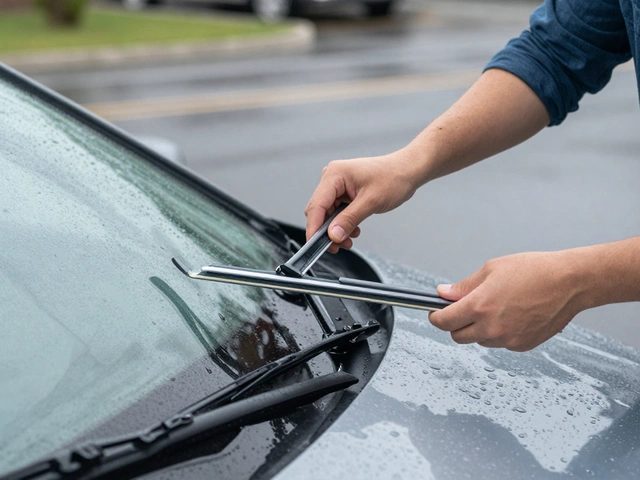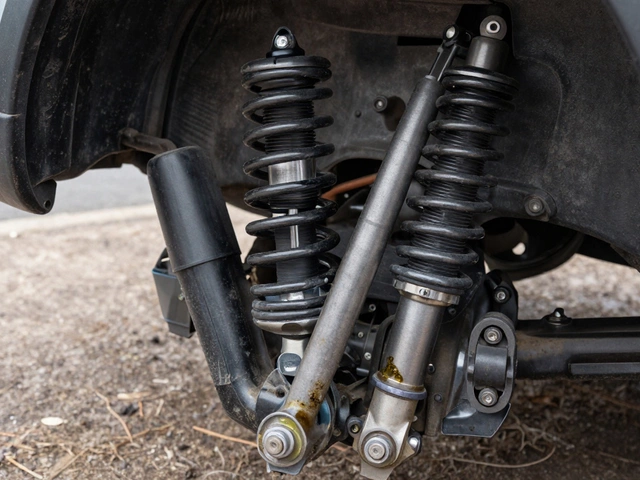If your engine cranks but never fires, the culprit is often a bad fuel pump. While a new pump is the permanent solution, you don’t have to sit on the roadside waiting for a tow. Below are practical ways to get the engine running long enough to drive to a garage, plus how to spot the signs that the pump really needs replacement.
Key Takeaways
- Identify a failing pump by symptoms such as sputtering, loss of power, or a no‑start condition.
- Temporary fixes include starting fluid, manual hand‑pump, external pressure boosters, and crank‑pumping for older carbureted engines.
- Each method has a cost, effectiveness, and risk profile - choose the one that matches your situation.
- Safety is critical: work in a well‑ventilated area, wear gloves, and avoid excessive fuel spillage.
- Plan to replace the pump promptly; temporary fixes are not a long‑term fix.
What Is a Fuel Pump and Why Does It Fail?
Fuel Pump is a mechanical or electric device that moves gasoline from the tank to the engine at the correct pressure. Most modern cars use an electric pump located inside the fuel tank, driven by the motor’s controller. Common failure modes include worn bearings, clogged inlet screens, electrical short circuits, or overheating due to a weak voltage supply. When the pump can’t maintain the required pressure (usually 30‑60 psi for gasoline engines), the engine receives too little fuel and refuses to start.
Diagnosing a Bad Fuel Pump
- Listen for a faint whirring sound from the tank when you turn the key to the "on" position. No sound often means the pump isn’t receiving power. \n
- Check fuel pressure with a handheld gauge. Readings below the manufacturer’s spec (e.g., 30 psi) confirm low pressure.
- Inspect the Fuel Filter - a clogged filter can mimic pump failure. Replace it if it’s dirty before assuming the pump is bad.
- Scan for error codes. Codes like P0230 (fuel pump primary circuit) or P0087 (fuel rail pressure too low) point directly at the pump.
- Verify voltage at the pump’s connector (typically 12‑14V). Low voltage suggests a wiring issue, not necessarily a bad pump.
Temporary Bypass Methods
When you’re stranded, these work‑arounds can give the engine enough fuel to start and run for a few minutes. Choose based on what you have in your trunk or garage.
1. Starting Fluid (Ether) Spray
Starting fluid ignites easily and can compensate for low fuel pressure. Spray a short burst into the air intake while cranking. The engine may fire briefly, giving you a chance to pull away.
2. Hand‑Operated Fuel Pump
A small manual pump connects to the fuel line after the tank. By pumping a few strokes, you create enough pressure to feed the injectors for a short burst. This method works best on diesel‑engine trucks but can be adapted for gasoline with the right nozzle.
3. External Electric Fuel Pressure Booster
Portable boosters plug into a 12V outlet and push fuel from the tank to the rail. They usually provide 40‑60psi, matching factory specs. Connect the booster’s inlet to the tank’s filler pipe and the outlet to the fuel rail using the supplied adapters.
4. Crank‑Pumping (Carbureted Vehicles)
Older cars with a carburetor can be "pump‑primed" by quickly turning the ignition key off and on several times. This forces the mechanical pump to build pressure in the line. It’s ineffective on modern fuel‑injected cars.
5. Using a Portable Jump Starter with Integrated Fuel Delivery
Some high‑capacity jump starters include a built‑in fuel pump that can be clamped onto the fuel line. They double as a battery boost and a temporary fuel source.
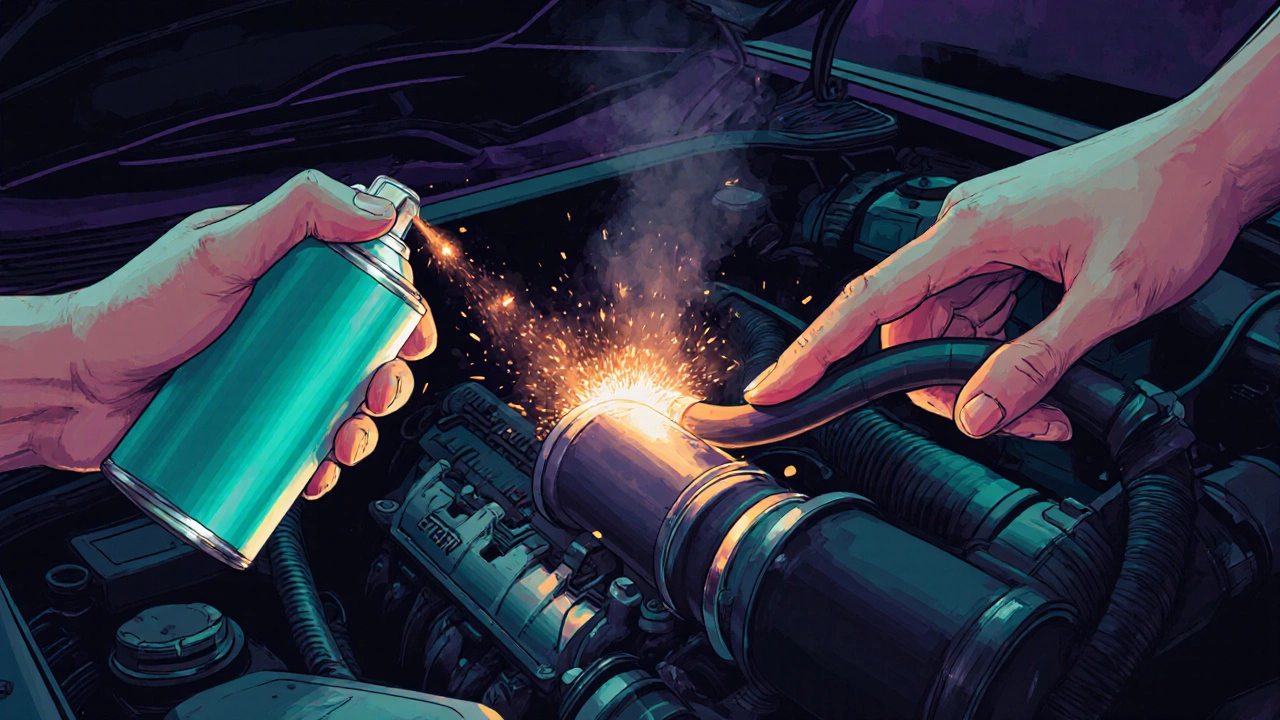
Step‑by‑Step Guide for Each Method
- Starting Fluid
- Locate the air‑intake tube (usually a plastic hose near the throttle body).
- Remove the tube or use a small opening to spray 1‑2 quick bursts while the starter cranks.
- If the engine catches, gently press the accelerator to keep it running; drive to a safe location.
- Hand Pump
- Relieve fuel system pressure: remove the fuel pump fuse and crank the engine for 5 seconds.
- Attach the pump’s suction hose to the fuel line downstream of the filter.
- Pump 5‑10 strokes, then attempt to start the engine.
- External Booster
- Turn off the ignition and disconnect the battery to avoid sparks.
- Connect the booster’s power cable to the 12V socket.
- Secure the inlet hose to the filler neck and the outlet hose to the fuel rail’s test port.
- Turn the booster on, then crank the engine. Once running, disconnect the booster carefully.
- Crank‑Pumping
- Turn the key to "on" (no start) for 2 seconds, then back to "off". Repeat 4‑5 times.
- On the final "on" position, hold the starter until the engine fires.
- Jump Starter with Fuel Delivery
- Attach the clamp to the fuel line per the device’s manual.
- Power the unit using its internal battery.
- Crank the engine; the integrated pump supplies a short burst of fuel.
Safety Tips & Common Pitfalls
- Ignition System should be in good condition; a weak spark can make a temporary fuel fix look like a pump problem.
- Never overuse starting fluid - it’s highly volatile and can cause engine damage if used repeatedly.
- Ensure all connections are tight when using external boosters; a leak can lead to fire hazards.
- Work in a well‑ventilated area to avoid inhaling fuel vapors.
- Never attempt to bypass the fuel pump on a diesel engine without proper compression - diesel relies on high pressure for ignition.
When to Call a Professional
If any of the following are true, it’s time to get a qualified mechanic:
- Engine cranks but still won’t start after three attempts with starting fluid.
- Fuel pressure stays below spec even after using an external booster.
- Electrical diagnostics reveal a short in the pump’s wiring harness.
- Noise from the pump (grinding or whining) persists.
- You notice fuel leakage from the Fuel Line or pump housing.
Professional replacement usually costs £150‑£300 for parts and labor on a typical compact car. Some models (e.g., BMW, Audi) require a higher‑price pump and may need a special in‑tank removal procedure.
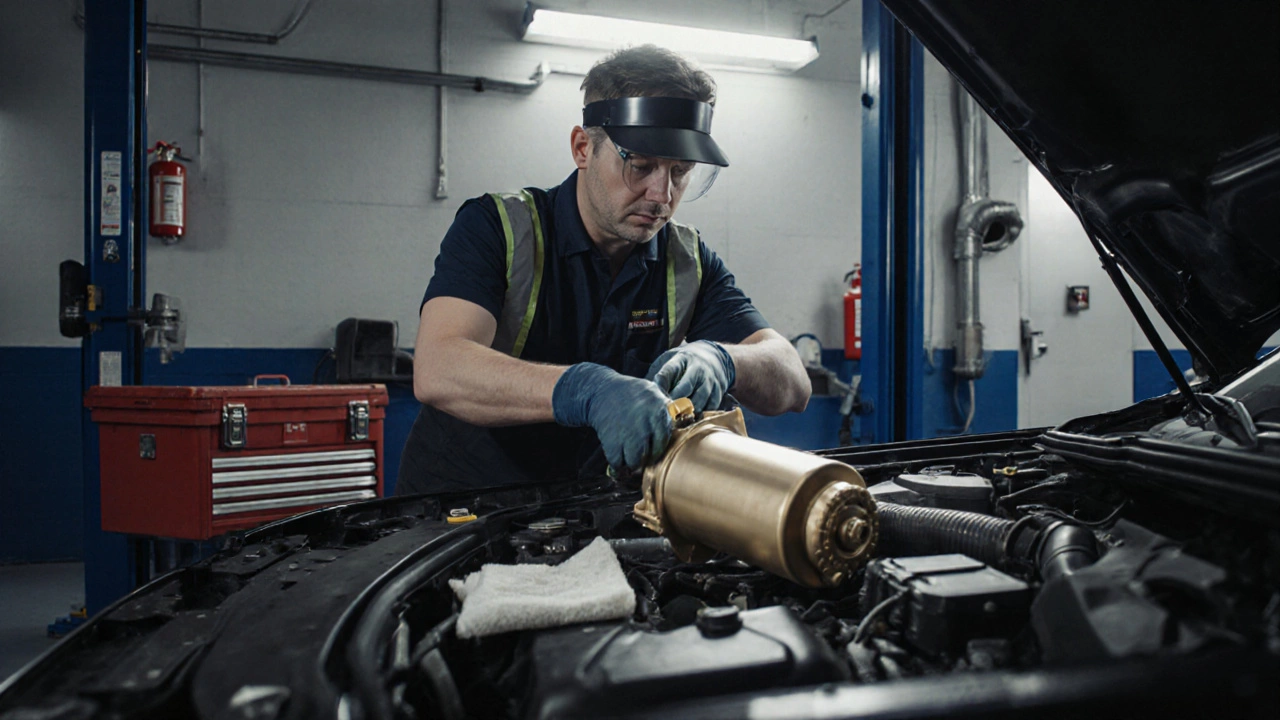
Comparison of Temporary Fixes
| Method | Typical Cost (GBP) | Effectiveness | Risk Level |
|---|---|---|---|
| Starting Fluid Spray | £5‑£8 per can | High - works for 5‑30 seconds of running | Medium - flammable, can damage valves if overused |
| Hand Pump | £20‑£35 for a basic kit | Moderate - provides 10‑20 seconds of pressure | Low - manual effort, potential for spills |
| External Booster | £60‑£120 for a portable unit | High - maintains correct pressure for several minutes | Low - electrical safety must be observed |
| Crank‑Pumping (Carbureted) | Free (no tools needed) | Low - only works on very old engines | Low - no additional risk |
| Jump Starter with Fuel Delivery | £80‑£150 for a combo unit | High - delivers fuel and power simultaneously | Medium - improper clamping can cause leaks |
Frequently Asked Questions
Can I use diesel starting fluid in a gasoline engine?
No. Diesel starting fluid contains a higher concentration of ether and can cause pre‑ignition in a gasoline engine, potentially damaging pistons or valves. Always use a product specifically labeled for gasoline engines.
Is it safe to drive a few miles with a temporary fuel boost?
Yes, but only for short distances to a repair shop. Driving too far can overheat the pump, cause fuel starvation, and leave you stranded again.
What does a whining sound from the tank indicate?
A high‑pitched whine usually means the pump’s motor bearings are wearing out. It’s a warning sign that the pump will fail soon and should be inspected.
Do fuel filters need to be replaced when the pump dies?
Often yes. A clogged filter can cause the pump to overwork, accelerating wear. Replacing the filter during a pump repair is good preventative maintenance.
Can I repair the pump myself?
In‑tank pumps are sealed units; most DIYers replace the whole assembly rather than repair internal components. If you’re comfortable working with fuel systems and have the right tools, a replacement can be done, but professional service ensures safety and proper priming.
Next Steps & Troubleshooting Checklist
- Verify fuel level - a near‑empty tank can mimic pump failure.
- Scan for codes and record P0230 or P0087 if present.
- Try starting fluid; if it fires, fuel delivery is the issue.
- Use a portable booster to get the car to the nearest garage (max 10km).
- Plan a pump replacement - order the correct OEM part using your vehicle’s VIN.
- After replacement, bleed the fuel system and reset the pump’s safety latch (usually done by turning the key on for 2 seconds before starting).
By following these steps, you’ll turn a frustrating no‑start situation into a manageable short‑term fix, buying yourself time to get the proper repair done.
